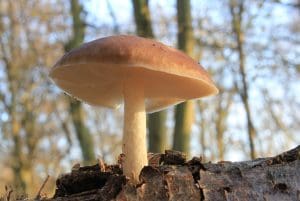Deer shield / Spring / Summer / Autumn / Winter / Edible
The Deer Shield Mushroom (Pluteus cervinus) is a widespread and commonly found species that thrives in woodland environments across the UK, Europe and North America. I don’t find it that often and it’s one of those mushrooms that always stumps me when I first come across it – Making me think ‘I definitely know what this is, but I can’t think of its name right now’
Its name, derived from the Latin word cervinus, meaning “deer-like,” refers to its earthy brown colouring reminiscent of a deer’s coat.
This mushroom typically grows on decaying wood, particularly hardwoods, and is easily recognisable by its large, brown cap and free, pinkish gills. Although considered edible when young, it is not highly prized for culinary use.
In this article, we will delve into the key identifying features of the Deer Shield Mushroom, its ecological role, and its edibility, helping us foragers make informed decisions when encountering this species in the wild.
Scientific Name
Pluteus Cervinus
Common Name
Deer shield
Family
Pluteaceae
Habitat and Season
Growing directly off dead wood of broad-leaf trees
Appears mostly singly, occasionally as a pair
Long season spring- to early winter
Identifying Features of the Deer Shield Mushroom
Very common and quite easy to recognise, lovely symmetric look to this mushroom when young.
Cap:
Grey- brown cap, convex at first flattening out with age. A slight central umbo that is a little darker in colour.
Greasy looking with smooth fibrous texture
Often with radial raised ring/s
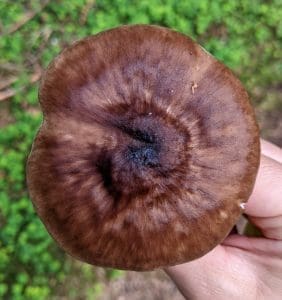
Stem:
silvery-white with longitudinal grey fibres, that almost glisten when looked at in sunlight if you have young specimen
Straight and uniform usually with a curve at the base where it attaches to the wood
Central on cap
No ring
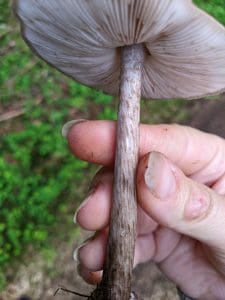
Gills:
White turning light dusty pink with age
Free- gills do not touch the stem
Shorter intermediate gills
Symmetric look
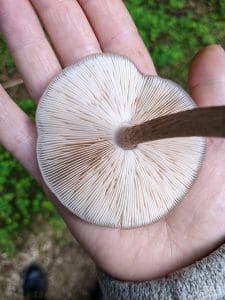
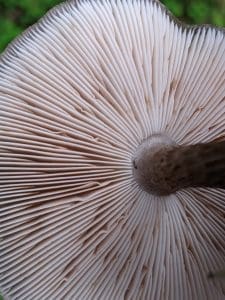
Smell:
Faint, slightly of radish
Spores:
Light pink
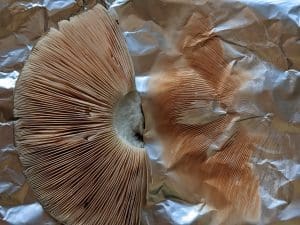
Uses of the Deer Shield
Edible but poor, tastes slightly of radish
Conservation Considerations
Very common, no concern
Deer Shield Could Be Confused With
The main feature that differentiates deer shield from similar looking fungi is how it grows directly off dead wood.
Other similar shield fungi none of which are known to be harmful
Pluteus umbrosus- which has a more felty scaly cap and dark gill edges.
Entolomas which are related to deer shields would be the biggest concern with misidentification as many are very toxic. By being sure the mushroom has FREE gills ( do not touch the stem at all) will rule this out
Learn more about mushroom gills here
Caution and known hazards
none known
Extra Tips and Fun Facts
The name deer is in reference to the the likeness in colour to a deers fur.
Source
Book- Fungi of temperate Europe by Thomas Laessoe and Jens H.Peterson



